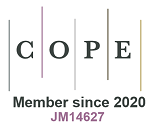Applying the Investment Multiplier to Identify Key Points of Economic Growth
Abstract
Doi: 10.28991/ESJ-2022-06-02-05
Full Text: PDF
Keywords
References
Collingro, F., & Frenkel, M. (2020). Fiscal multipliers in the euro area: A comparative study. The Quarterly Review of Economics and Finance. doi:10.1016/j.qref.2020.08.005.
Oosterhaven J., Hewings G.J.D. (2021) Interregional Input-Output Models. In: Fischer M.M., Nijkamp P. (eds.) Handbook of Regional Science, 875-901. Springer, Berlin, Heidelberg. doi:10.1007/978-3-662-60723-7_43.
Ponomarev, Ju. Ju., and Evdokimov, D. Ju. (2020). Estimation of extended multiplicative socio-economic effects based on the input-output balance model”. Economic development of Russia 27 (7), 30-45. (In Russian).
Ministry of Finance of the Russian Federation. (2020). Data on the execution of consolidated budgets of the subjects of the Russian Federation at January 1, 2020. Available online: https://minfin.gov.ru/ru/document/?id_4=129623dannye_ b_ispolnenii _konsolidirovannykh_byudzhetov_subektov_rossiiskoi_federatsii_na_1_yanvarya_2020_goda (accessed April 2021).
Giambattista, E., & Pennings, S. (2017). When is the government transfer multiplier large? European Economic Review, 100, 525–543. doi:10.1016/j.euroecorev.2017.09.003.
Ksenofontov, M. Y., Shirov, A. A., Polzikov, D. A., & Yantovskii, A. A. (2018). Assessing Multiplier Effects in the Russian Economy: Input-Output Approach. Studies on Russian Economic Development, 29(2), 109–115. doi:10.1134/S1075700718020089.
Bayer, C., Born, B., Luetticke, R., & Müller, G. J. (2020). The Coronavirus Stimulus Package: How Large is the Transfer Multiplier? CEPR Discussion Paper No. DP14600, Available online: https://ssrn.com/abstract=3594222 (accessed April 2021).
Izquierdo, A., Lama, R., Medina, J., Puig, J., Riera-Crichton, D., Vegh, C., & Vuletin, G. J. (2019). Is the Public Investment Multiplier Higher in Developing Countries? An Empirical Exploration. IMF Working Papers, 19(289), 1-48. doi:10.5089/9781513521114.001.
Miller, R. E., & Blair, P. D. (2009). Input-output analysis: Foundations and extensions, second edition. In Input-Output Analysis: Foundations and Extensions, Second Edition (2nd ed), 1–750. doi:10.1017/CBO9780511626982.
Evstratov, A. A., Kalinin, A. M., & Parsegov, S. G. (2016). The use of input–output tables to forecast the effects of demand stimulation state policy. Studies on Russian Economic Development, 27(1), 13–20. doi:10.1134/S1075700716010032.
Wilson, D. J. (2020). The covid-19 fiscal multiplier: Lessons from the great recession. FRBSF Economic Letter, 13, 1-5.
Suvorov, P. A. (2014). Cost-Release Method as a Tool for Evaluating the Macroeconomic Efficiency of Innovation and Investment Projects. Extended abstract of PhD dissertation (Economics), Moscow, (In Russian).
Boehm, C. E. (2020). Government consumption and investment: Does the composition of purchases affect the multiplier? Journal of Monetary Economics, 115, 80–93. doi:10.1016/j.jmoneco.2019.05.003.
Chodorow-Reich, G. (2019). Geographic cross-sectional fiscal spending multipliers: What have we learned? American Economic Journal: Microeconomics, 11(2), 1–34. doi:10.1257/pol.20160465.
Goridko, N. P., & Nizhegorodtsev, R. M. (2018). The growth points of regional economy and regression estimation for branch investment multipliers. Economy of Region, 14(1), 29–42. doi:10.17059/2018-1-3.
Silvestrov, S. N., Bauer, V. P., & Eremin, V. V. (2018). Estimation of the dependence of the investment multiplier on the structure of the regional economy. Economy of Region, 14(4), 1463–1476. doi:10.17059/2018-4-31.
Zyablitskiy, I. (2020). Estimating fiscal multipliers in Russian economy. HSE Economic Journal, 24(2), 268–294. doi:10.17323/1813-8691-2020-24-2-268-294.
Ganelli, G., & Tervala, J. (2020). Welfare Multiplier of Public Investment. IMF Economic Review, 68(2), 390–420. doi:10.1057/s41308-020-00111-7.
Idrisov, G. I., & Ponomarev, Y. Y. (2019). Infrastructure mortgage in Russia: Opportunities and prospects. Voprosy Ekonomiki, 2(2), 114–133. doi:10.32609/0042-8736-2019-2-114-133.
Leonidova, E. G., & Sidorov, M. A. (2019). Structural changes in the economy: searching for sectoral drivers of growth. Economic and social changes: facts, trends, forecast, 12(6), 166-181. doi.org/10.15838/esc.2019.6.66.9.
Ramey, V. A., & Zubairy, S. (2018). Government spending multipliers in good times and in bad: Evidence from US historical data. Journal of Political Economy, 126(2), 850–901. doi:10.1086/696277.
Deleidi, M., Iafrate, F., & Levrero, E. S. (2020). Public investment fiscal multipliers: An empirical assessment for European countries. Structural Change and Economic Dynamics, 52, 354–365. doi:10.1016/j.strueco.2019.12.004.
Kameda, T., Namba, R., & Tsuruga, T. (2021). Decomposing local fiscal multipliers: Evidence from Japan. Japan and the World Economy, 57. doi:10.1016/j.japwor.2021.101053.
Czubak, W., Pawłowski, K. P., & Sadowski, A. (2021). Outcomes of farm investment in Central and Eastern Europe: The role of financial public support and investment scale. Land Use Policy, 108, 105655. doi:10.1016/j.landusepol.2021.105655.
Debuque-Gonzales, M. (2021). Local fiscal multipliers and spillover effects: Evidence from Philippine regions. Economic Systems, 45(2), 100764. doi:10.1016/j.ecosys.2020.100764.
Derkacz, A. J. (2020). Fiscal, investment and export multipliers and the COVID-19 pandemic slowdowns uncertainty factor in the first half of 2020. Risks, 8(4), 1–21. doi:10.3390/risks8040122.
Boehm, C. E. (2020). Government consumption and investment: Does the composition of purchases affect the multiplier? Journal of Monetary Economics, 115, 80–93. doi:10.1016/j.jmoneco.2019.05.003.
Ganelli, G., & Tervala, J. (2020). Welfare Multiplier of Public Investment. IMF Economic Review, 68(2), 390–420. doi:10.1057/s41308-020-00111-7.
Goridko, N. P., & Nizhegorodtsev, R. M. (2018). The growth points of regional economy and regression estimation for branch investment multipliers. Economy of Region, 14(1), 29–42. doi:10.17059/2018-1-3.
Silvestrov, S. N., Bauer, V. P., & Eremin, V. V. (2018). Estimation of the dependence of the investment multiplier on the structure of the regional economy. Economy of Region, 14(4), 1463–1476. doi:10.17059/2018-4-31.
Ministry of Industry and Trade of Russia. (2021). Ministry of Industry and Trade of the Russia presented top 20 regions with effective implementation of industrial policy. Moscow, Russia. Available online: https://minpromtorg.gov.ru/press-centre/news/#!minpromtorg_rossii_prezentoval_top20_regionov_s_effektivnoy_realizaciey_promyshlennoy_politiki (accessed April 2021).
Federal State Statistics Service. (2021). Regions of Russia. Main characteristics of the subjects of the Russian Federation” Moscow, Russia. Available online: https://gks.ru/folder/210/document/13205 (accessed March 2021).
Finanz Portal. (2021). Debt load of Russian people achieved a new record. Moscow, Russia. Available online: https://www.finanz.ru/novosti/lichnyye-finansy/dolgovaya-nagruzka-rossiyan-dostigla-novogo-rekorda-1029295868 (accessed June 2021).
DOI: 10.28991/ESJ-2022-06-02-05
Refbacks
- There are currently no refbacks.
Copyright (c) 2022 Mikhail Evgenievich Kosov, Vladimir Vladimirovich Eremin, Sergey Alekseevich Pobyvaev, Tural Sokhbat Ogly Gaibov






